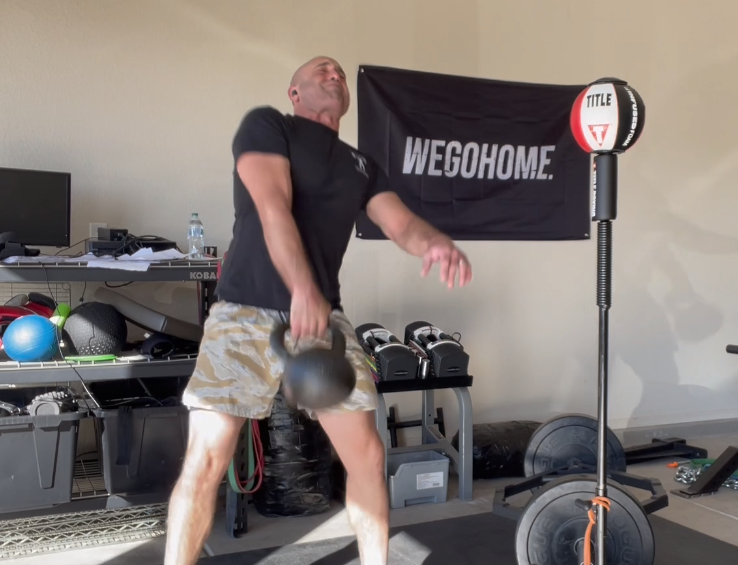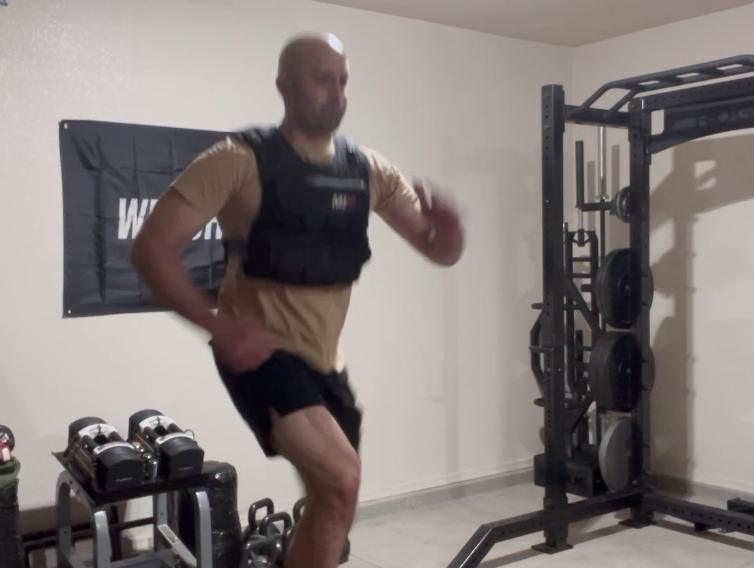Key Takeaway
Tactical/First Responder populations (or really anyone) are often convinced that the only way to develop power in the weight room are via the use of the traditional barbell Olympic Lifts- Specifically variations of the clean and snatch. As someone who loved doing the barbell hang clean it pains me to say as fun as these lifts are, they are not necessary to train power for our Hero populations.
Much like with the traditional barbell powerlifts, there is nothing inherently wrong with Olympic lifts on their own, assuming they are completed with proper form and programmed appropriately. However, it takes a talented coach to properly teach these lifts, and in many gyms the form ends up somewhat reckless and/or worse...these lifts are used primarily for high rep conditioning.
The barbell variations of these movements are also a less forgiving even when completed properly, particularly for people with some wear and tear. This is often due to the fixed nature of the bar which forces the trainee into certain positions during the lift. Again, not that this is inherently bad, it just depends on the individual. For some, forcing themselves into these positions can be problematic over time, as opposed to using single arm variations or other implements to train the exact same quality.
I would argue most individuals in the “tactical” realm can train power with various implements in a much safer manner, particularly as they age in their careers, and still get a phenomenal training stimulus without the drawbacks I described above. Various jumps, medball throws, and landmine exercises can serve these populations better.
Power/Rate of Force Development
If you are completing a session or training block that is more focused on power development, here are the principles one needs to generally follow:
- Weight should be “light” to “moderate”
- You should be lifting the implement with intent- move the weight as fast as possible
- You’ll need longer rest between sets if you’re training true power development- 3-5 Minutes
- If you’re building capacity, or your ability to keep generating power over time, you can rest a little less between repeated efforts. Quality/speed of reps should still remain high. This can be accomplished by doing several rounds as opposed to one long set.
- Power vs. Capacity- You should train your ability to generate power first- then train capacity- repeating bouts of low power output on the street is relatively useless – you need to build a strength base/reserve – This is often overlooked as many people don’t “feel” tired after this kind of training so they think it wasn’t effective.
Tools
Assuming you are following the principles outlined above, this is where the traditional barbell Olympic lifts do not need to be the limitation. They’re great, and twenty year old me would disagree with 40 year old me, but there is nothing wrong with relying on jumps, throws, various KB/DB movements, and even variations of the barbell powerlifts to train power production.
Jumps
Box Jump variations can be a great way to train power with much less impact on the joints. If you don’t have a higher box you can land in more of a more straight leg position (still soft knees...do not land with your knees locked out) or add weight in various position. Don’t feel limited to just jumping forward. You can also jump laterally or even rotate in the air to add a bit of complexity but still keep things relatively safe.
Throw variations
It is hard to put everything into a neat category when discussing this topic. As many of these are going to train total body power even though it primarily looks like an upper body movement. Below is a video of an alactic capacity circuit we programmed in an earlier phase. Within this circuit we used various MB movements that would be great to incorporate in a group setting of various skill levels. These could also be done in a training session for anywhere between 3-5 reps, with ample rest between movements to focus on max power output. In this video we were primarily focusing on capacity and using these as a conditioning tool.
Landmine/KB/Body-Weight/Powerlift Variations
The kettle bell snatch does require some instruction, but what is great about this? It has to be fast and powerful to get the weight overhead into position in one smooth movement...you can’t be “slow” on a movement like this...this exercise requires power to do it properly.
A landmine split jerk is also a great variation for total body power. It is relatively safe and at a friendly angle for individuals with shoulder issues:
Here is a push press variation with a dumbbell. Doing these movements with one arm allows our gray beards to find a range of motion that does not aggravate old injuries:
An example of a body-weight movement that is great to train power, is the plyo-push up:
And last but not least, the trap bar can be used in place of the barbell as opposed to a power clean from the floor:
Closing
As said earlier, there is nothing wrong with the classic Olympic lifts. However, the problem is often the execution, coaching, and implementation of these lifts in the bigger picture of the program. If you’re in the tactical population or a first responder doing some jumps, medball throws, or using other implements can still accomplish what we’re getting after here: power development.
The barbell is just one of the tools, and if the loading pattern or position of the bar is aggravating an old injury, there is nothing wrong with doing something else as long as you follow the principles above. The end goal is your performance on the job, not performance on a particular lift. Whatever you choose- just move it fast, with intent, and watch it carry over into your performance on the street.
-
Weight should be “light” to “moderate”
-
You should be lifting the implement with intent- move the weight as fast as possible
-
You’ll need longer rest between sets if you’re training true power development- 3-5 Minutes
-
If you’re building capacity, or your ability to keep generating power over time, you can rest a little less between repeated efforts. Quality/speed of reps should still remain high. This can be accomplished by doing several rounds as opposed to one long set.
- Power vs. Capacity- You should train your ability to generate power first- then train capacity- repeating bouts of low power output on the street is relatively useless – you need to build a strength base/reserve – This is often overlooked as many people don’t “feel” tired after this kind of training so they think it wasn’t effective.
Tools
Assuming you are following the principles outlined above, this is where the traditional barbell Olympic lifts do not need to be the limitation. They’re great, and twenty year old me would disagree with 40 year old me, but there is nothing wrong with relying on jumps, throws, various KB/DB movements, and even variations of the barbell powerlifts to train power production.
Jumps
Box Jump variations can be a great way to train power with much less impact on the joints. If you don’t have a higher box you can land in more of a more straight leg position (still soft knees...do not land with your knees locked out) or add weight in various position. Don’t feel limited to just jumping forward. You can also jump laterally or even rotate in the air to add a bit of complexity but still keep things relatively safe.
Throw variations
It is hard to put everything into a neat category when discussing this topic. As many of these are going to train total body power even though it primarily looks like an upper body movement. Below is a video of an alactic capacity circuit we programmed in an earlier phase. Within this circuit we used various MB movements that would be great to incorporate in a group setting of various skill levels. These could also be done in a training session for anywhere between 3-5 reps, with ample rest between movements to focus on max power output. In this video we were primarily focusing on capacity and using these as a conditioning tool.
Landmine/KB/Body-Weight/Powerlift Variations
The kettle bell snatch does require some instruction, but what is great about this? It has to be fast and powerful to get the weight overhead into position in one smooth movement...you can’t be “slow” on a movement like this...this exercise requires power to do it properly.
A landmine split jerk is also a great variation for total body power. It is relatively safe and at a friendly angle for individuals with shoulder issues:
Here is a push press variation with a dumbbell. Doing these movements with one arm allows our gray beards to find a range of motion that does not aggravate old injuries:
A body-weight movement that is great to train power, is the plyo push up:
And last but not least, the trap bar can be used in place of the barbell for clean pull variations:
Closing
As said earlier, there is nothing wrong with the classic Olympic lifts. However, the problem is often the execution, coaching, and implementation of these lifts in the bigger picture of the program. If you’re in the tactical population or a first responder doing some jumps, medball throws, or using other implements can still accomplish what we’re getting after here: power development.
The barbell is just one of the tools, and if the loading pattern or position of the bar is aggravating an old injury, there is nothing wrong with doing something else as long as you follow the principles above. The end goal is your performance on the job, not performance on a particular lift. Whatever you choose- just move it fast, with intent, and watch it carry over into your performance on the street.



